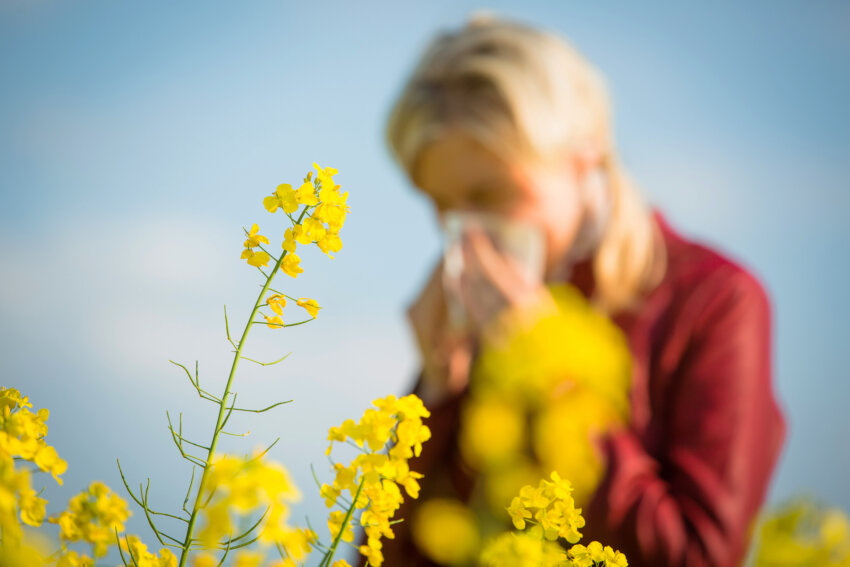With mountain cedar having reared its head earlier than its expected mid-December arrival, some may be scrambling to find the best ways to manage the effects of the dreaded tree pollen.
According to Edward Brooks, MD, a UT Health San Antonio allergy and immunology specialist, the best non-medical defense could be crumbled in a jacket pocket or purse — a mask.
“This is an old trick we would tell people who are grass allergic: to wear a mask while mowing the lawn,” he said. “If you know what you are allergic to and know it’s that season, you should wear a mask outside.”
While indoors, Brooks recommends washing hands and rinsing faces to remove the pollen immediately. And showering in the evening keeps the pollen off your bedding, he said.
The early appearance of mountain cedar or the pollen from Ashe juniper trees may have surprised some, but Robert Edmonson, a biologist with the Texas A&M Forest Service, said sunny skies and low humidity are ideal conditions to trigger the production of pollen.
“You’ll notice that folks suffer the most on sunny days with low humidity and the least when it’s misty and cloudy, because water takes pollen out of the air,” he said.
Edmonson said the years of extreme weather, such as drought and cold, won’t stop the trees from releasing the pollen. Both types of weather conditions lead to trees entering survival mode.
“I’ve noticed that when trees get stressed like it’s their last day on planet Earth, they work to get their genetic material out there,” he said. “That’s what’s happening; the male cedar trees are releasing their DNA, hoping it finds a receptive female to make a fleshy cone and make a new tree.”
Edmonson said that while several conditions determine whether it will be a heavy mountain cedar year, tree colors are an easily recognizable predictor.
“If you are driving around and see lots and lots of orange on the cedar trees, that means there are a lot of pollen cones out there,” he said. “Male juniper pollen cones turn orange when they are ready to mature.”
According to the Asthma and Allergy Foundation of America’s 2023 Allergy Capitals report of the most challenging places to live with allergies, San Antonio ranked 37th across the nation, while the city’s largest in-state counterparts, Dallas and Houston, ranked second and 12th, respectively. Rankings are based on spring and fall pollen scores, over-the-counter medicine use and availability of board-certified allergists and immunologists.
Itchy eyes, runny noses and hoarse voices are the body’s immune system response to tree and grass pollens prevalent during the year. Brooks said several medicinal and non-medicinal treatments could help manage symptoms, such as saline rinses, hand washing, neti pots and over-the-counter medications. When using nasal sprays, he recommends his patients use saline rinses first and then blow their nose to remove excess mucus before using the spray.
When patients are experiencing severe symptoms, he recommends using nasal sprays with steroids three to four times a day, contrary to the U.S. Food and Drug Administration’s recommended twice-daily dose.
“Part of it is you don’t get it in there because you’re snotty. You squirt it in there, blow your nose, and it’s gone. The FDA doesn’t take that into account. It’s just not enough steroids. If you are severe, you need more,” he said.
Brooks said one natural way to defend against developing allergies could start in the first two to three years of a child’s life.
“The best thing for a child is to get them outside, roll them in the dirt and expose them to a rich microbiome. One of the consistent findings is that people with allergies have a less diverse microbiome. So, dirty is good,” he said.


